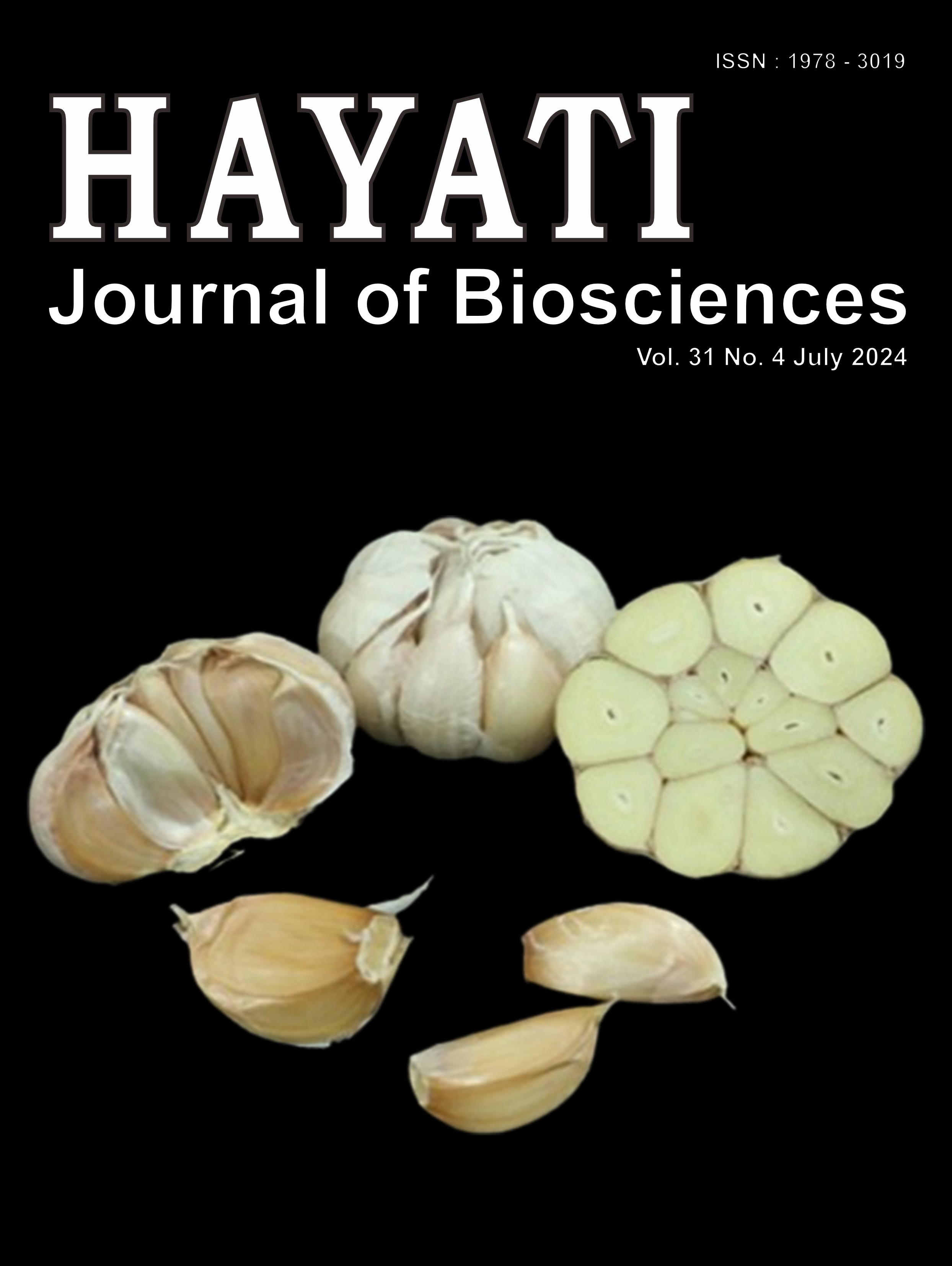The Potential of Bacillus altitudinis B538 and Alcaligenes faecalis B947 in PET and PCL Plastic Degradation
Abstract
Polyethylene terephthalate (PET) plastic is the most widely used type of plastic that produces waste and causes various environmental and health problems. The treatment of PET plastic waste with chemically and mechanically recycling approaches still has shortcomings, so biological processing using microorganisms or enzymes has new potential. Two bacterial isolates from the Indonesian Culture Collection of National Research and Innovation Agency (InaCC, BRIN), namely isolate InaCC B538 and InaCC B947, were further observed for their potential in PET plastic degradation. Firstly, both isolates were determined by the molecular marker 16S rDNA. The potential of both isolates was measured with following method: 10 days of degradation using PET and PCL substrates, esterase enzyme activity assay, and observation of the PET plastic surface using Scanning Electron Microscope (SEM). Species identification was performed using DNA sequencing of 16S rDNA. InaCC B538 and InaCC B947 were closely related to Bacillus altitudinis TBMAX41 and Alcaligenes faecalis AN-13, respectively. InaCC B947 isolate has a better potential in degrading PET plastic and PCL with a degradation percentage of 0.32% for PET plastic and 3.22% for PCL film for 10 days, respectively, and esterase activity of 0.06 U/ml; while InaCC B538 did not cause weight loss of PET and 2.49% for PCL, respectively, with esterase activity of 0.04 U/ml. The degradation of PET plastic by the isolates InaCC B947 was able to cause damage to the plastic surface leading to the degradation of PET plastic.
Downloads
Copyright (c) 2024 Muthia Rahmah Dini, Mochamad Nurcholis, Maria Ulfah, Gabriela Christy Sabbathini, Sri Rezeki Wulandari, Is Helianti

This work is licensed under a Creative Commons Attribution-NonCommercial 4.0 International License.
HAYATI J Biosci is an open access journal and the article's license is CC-BY-NC. This license lets others distribute, remix, tweak, and build upon author's work, as long as they credit the original creation. Authors retain copyright and grant the journal/publisher non exclusive publishing rights with the work simultaneously licensed under a https://creativecommons.org/


















.png) IPB University
IPB University Department of Biology
Department of Biology The Indonesian Biological Society
The Indonesian Biological Society 

